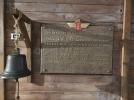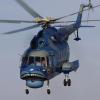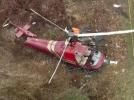Korean A333 at Seoul on May 26th 2011, engine shut down in flight following uncontained failure
A Korean Air Airbus A330-300, registration HL7553 performing flight KE-935 from Seoul (South Korea) to Prague (Czech Republic) with 277 passengers and 18 crew, was climbing through about 10,000 feet out of Seoul when the right hand engine (PW4168) emitted loud bangs and needed to be shut down. The airplane returned to Seoul for a safe landing about 40 minutes after departure.
A replacement Airbus A330-300 registration HL7587 reached Prague with a delay of 4 hours.
The airline reported the engine repeatedly surged and therefore needed to be shut down.
The NTSB reported on Sep 21st 2011, that a loud bang was heard from the right hand engine when the aircraft climbed through 11,500 feet. Engine vibrations increased, about 2 minutes after the bang the EGT rose above 705 degrees C and an engine stall and engine fire warning activated. The engine was shut down, the crew discharged one fire bottle and returned to Seoul. A post flight inspection showed a puncture of about 60 by 10 cm (23.6 by 3.9 inches) at the 11 o'clock position of the Low Pressure Turbine Case as well as two small holes. Additional metal parts were found in the exhaust and cowling area. The aircraft was not damaged. South Korea's ARAIB is investigating.
On Jul 8th 2014 South Korea's ARAIB released their final report in Korean concluding the probable cause of the serious incident was:
The 4th stage low pressure turbine vane cluster 27 dislodged from its original position, the turbine blades collided with it resulting in substantial damage to the engine case, the ejection of cluster 27 and malfunction of the engine.
Contributing factor was:
The second stage rotor of the high pressure turbine produced abnormal vibrations resulting in aerodynamic properties downstream that rocked the 4th stage low pressure turbine vane clusters. As result the vane clusters became badly worn.
Two safety recommendations to check the high pressure 2nd stage and low pressure 4th stage turbines for wear were released as result of the investigation.
The ARAIB reported that the aircraft was climbing through 11,900 feet when an explosion occurred at the right hand engine causing a heavy yaw of the aircraft. The fire warning activated. The right hand engine's N1 dropped to near zero with the EGT rising above the limits. The captain (56, ATPL, 16,779 hours total, 5,656 hours on type) was pilot flying initiated the severe engine damage and fire drill, the fire handle was pulled and the fire agent was discharged, the first officer (41, ATPL, 8,345 hours total, 935 hours on type), pilot monitoring, radioed ATC and declared emergency. Following the discharge of the fire agent the fire warning extinguished. The aircraft returned to Seoul for a safe landing on runway 16.
A post flight inspection revealed a debris stuck in the low pressure turbine case at about the 9 o'clock position visible from the outside, when it was attempted to open the engine cowl the debris fell to the floor. The 7th stage low pressure turbine blades and vanes had all been severely damaged. Metal debris was in the engine exhaust. There were no traces of damage at the engine inlet. The right hand wing flap fairing had been punctured.
At the low pressure turbine case a gap of 57cm length and 7cm width was located at about the 09:30 o'clock position, cracks were found between 11 and 12 o'clock. At the stage 4 position circumferential bulging of the case was observed. The low pressure turbine 4th stage's 44 vane clusters were found worn, cluster 27 was missing entirely and had been ejected from the engine.
The ARAIB analysed that previous experiments had identified a pattern in which stage 2 high pressure turbine vibrations could create an aerodynamic pattern (2E Excitation) at the 4th and 5th stage low pressure turbine causing wear to the vanes. The 2nd stage high pressure turbine rotor of the occurrence engine combined brand new and refurbished blades that created that pattern.
These vibrations and the wear down of the 4th stage LPT vanes eventually resulted in the release of the heat shield of the vane cluster 27, the cluster's mounts weakened until the cluster dislodged and 11 turbine blades collided with the cluster ejecting the cluster creating a gap in the low pressure engine case and causing severe damage to the blades and all further stages downstream.
The missing 4th stage low pressure turbine vane cluster 27 (Photo: ARAIB):
The gap in the low pressure turbine case (Photo: ARAIB):
The punctured flap fairing (Photo: ARAIB):
http://avherald.com/h?article=43da45e4














Komentarze